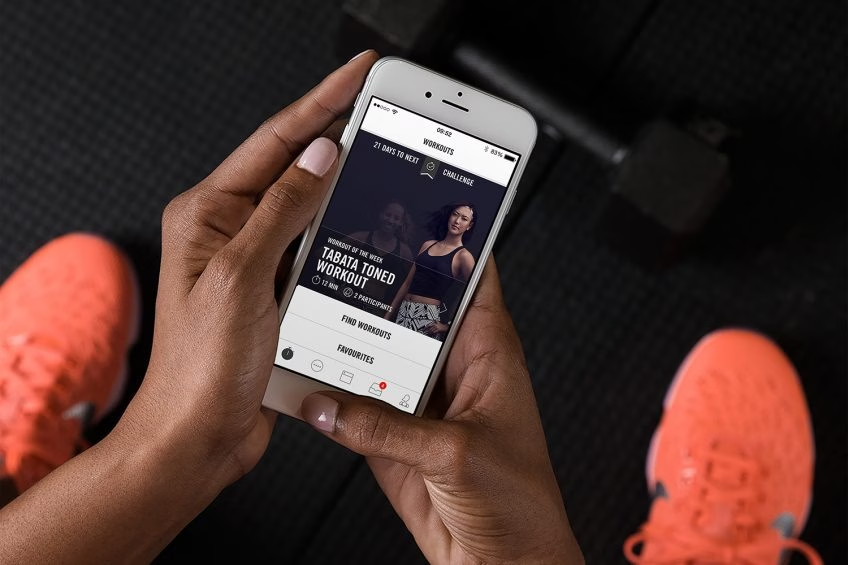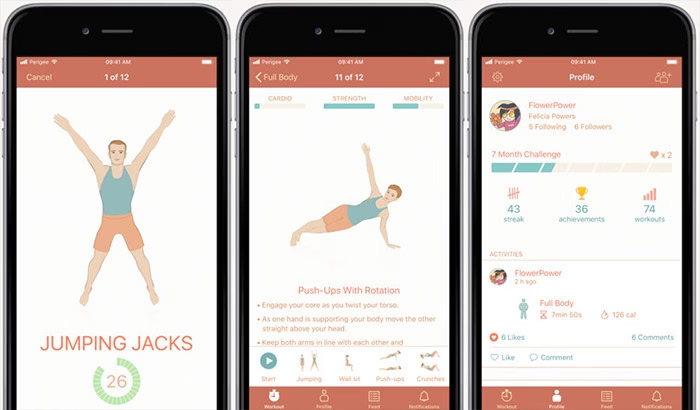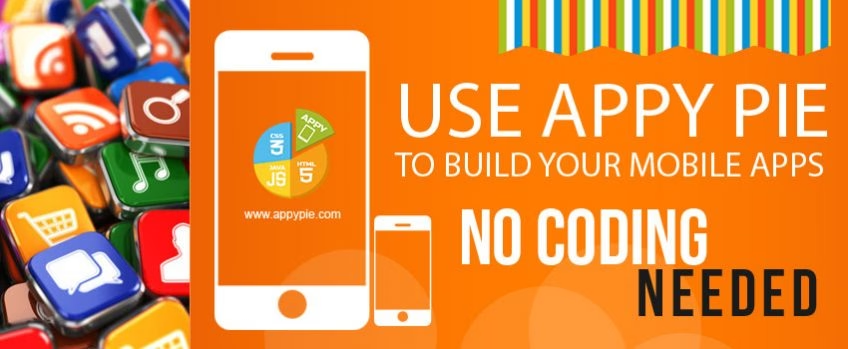
How to Build a Fitness App?
Interested in knowing how to build a fitness app?
This is a huge market with substantial rewards for those that get it right.
According to Vantage Market Research, "The global fitness app market size is expected to reach USD 15.2 billion by 2028, as stated in a new report by Globe News Wire, registering a CAGR of 17.6% over the forecast period".
Innovating in the fitness sector is not only the chance to make huge profits but also a great chance to help improve people's health. Let's see how you do that by building a feature-rich mobile app. First, let's go through some essential features of a fitness app.
Features desired in a fitness app

You want to create a fitness app that will compete with the market leaders, hence your app should be feature-rich. Consider including the following features in it:

Get a complimentary discovery call and a free ballpark estimate for your project
Trusted by 100x of startups and companies like
- Diet plans: The app should allow your users to create customized diet plans. A fitness regime is closely related to diet, however, users have their own budget. A one-size-fits-all solution usually doesn‘t work. Your users will need to customize according to their requirements, therefore, your app should allow that.
- Exercise programs: Different users are usually at different stages of their fitness journey hence the app should show different workout programs suitable to users‘ levels. Videos are important for this.
- Journal: Fitness is a lot about habit, consequently, users will need to record their activities daily. The app should allow recording of calorie intake and calorie burn too. Read about the importance of a journal in “5 Reasons Why You Should Keep a Fitness Journal?”.
- Tracking of steps: Outside of exercise, active people walk quite a bit. It‘s an important activity hence the app should be able to record it.
- An engaging ’user interface‘ (UI): The UI should be easy, and intuitive. The app designer needs to remember that using the app isn‘t the main purpose. Becoming healthier is the purpose, therefore, an easy-to-use UI is imperative.
- Social engagement: Many users find exercising alone to be boring. They need a thriving community to support them, hence, your app should enable them to build communities. Social engagement is important for a fitness app.
Read more about the features desired in a fitness app, in “7 Features of The Most Popular Functional Fitness App”.
Let‘s now review a few well-known fitness apps.
Top fitness app examples
You can get great ideas for your fitness app development by reviewing top fitness apps. Check out these top fitness apps:
- Fitbit: Users can use this famous app on their phone, besides, it also works with the wearable Fitbit activity tracker. Users can count their steps, pace or running, distance traveled, and calories burned. Users can set their goals, additionally, when paired with the wearable device it can collect data like heart rate and quality of sleep. It's available on both Android and iOS.
- Couch to 5k: This is available on both Android and iOS besides it‘s designed to train beginner runners. It‘s part of the “The Couch to 5k in 9 weeks running program”, where runners can get to the level of running 5 kilometers in 9 weeks. The app provides a virtual coach and you can plan your route using its‘ GPS, hence, the price tag of US $ 2.99 isn‘t much.
- MapMyRun: This famous app is available on both Android and iOS. It‘s a virtual coach to get one started with the journey of running, besides it gives suggestions to improve if one is an experienced runner. Users can set goals, additionally, they can track their improvement. The app is free, however, there are options available for in-app purchases.
- Fitness Buddy: This is another free app, additionally, it's available for Android, iOS, and Windows phones. The app offers 75 exercise routines besides, and the routines are categorized into different muscle groups. The app can act as a virtual trainer since it provides detailed videos and instructions. Users can set goals and measure their progress.
I am sure you are brimming with design ideas, so let‘s dive straight in! I will now describe a few approaches to developing a fitness application.
Approach #1: How to build a fitness app using the iBuildApp app-builder
If you are an entrepreneur in a hurry, then this is a good approach for you. “iBuildApp” provides an app-builder, and they have many ready-made templates to build a fitness app quickly.
You don‘t need to hire fitness app developers, furthermore, you don‘t need to engage a fitness app development company. Your ’Time-to-Market‘ is quick.
iBuildApp fitness app template features
Their fitness app templates provide useful features, e.g., exercises, online booking, and membership. They have multiple templates in this category, e.g., ’Yoga Trainer', ’Fitness Club', etc.
The features vary slightly based on the template, for example, the ’Yoga Trainer' template also has an ’Ask Coach' feature. Having said that, most key features are available in all templates. Visit their template catalog on their fitness and beauty solutions page.
Advantages of iBuildApp app-builder
Using the iBuildApp app-builder to build a fitness app quickly is easy, because of its drag-and-drop software. You can easily select a template, add features from the catalog, and complete your mobile app in no time.
You can also easily add your own videos, texts, and images. These are ready-made templates and features, hence, time for testing is also saved. To publish your app in ’Google Play‘, you need to check out their “Launch checklist”. On the other hand, to publish it in the ’Apple App Store‘, review the Apple “App Store Review Guidelines”.
Fitness app development cost with iBuildApp app-builder
In this approach, there is no development cost, furthermore, your cloud hosting is also covered in the pricing plan of iBuildApp. The company has pricing plans for the’Professional‘, ’Business‘, and ’Company‘ categories.
They have a good analytics suite, hence, you can measure user engagement. Higher priced plans include dedicated customer service, besides, the ’Company‘ plan also includes features like training, admin user management, and back-up/restore. Check out their plans on their pricing page.
Approach #2: How to build a fitness app with the Appy Pie app-builder

For start-ups with no access to skilled developers, this is another approach to launching a fitness or workout plan app quickly. In this approach, you will use an app builder provided by Appy Pie. You do not need to hire any fitness app developers.
Hire expert developers for your next project
1,200 top developers
us since 2016
Features supported by the Appy Pie gym app builder
When you make your fitness app with the Appy Pie gym app builder, you can include the following features:
- Create a news feed for fitness, health, and nutrition in your app.
- Your app will include exercise routines.
- The app can have coaching using streaming audio and video instructions.
- Users can see their body stats since the app will track them.
- Email, text messages, and push notifications will help increase user engagement.
- You can make an app for Android as well as iPhone.
How to build a fitness app using the Appy Pie app-builder
You need to sign-up for Appy Pie first. Then, you take a series of intuitive steps following their instructions. You need to provide the name and other relevant information for your business, subsequently, you need to choose one of their featured templates.
After this, using the drag-and-drop app builder, add features one by one. The entire process is easy, furthermore, it‘s suitable for non-technical users.
The cost to build a fitness app with the Appy Pie app-builder
There is no development cost, additionally, Appy Pie pricing plans include cloud hosting. The company provides a few different options. The higher you pay, the number of platforms supported is higher. Besides, your quote for disk space, bandwidth, and push notifications increases when you subscribe to the higher-priced plans.
Note that only their ’Platinum‘ plan allows a ’white label‘ app, i.e., you can use your own branding. This plan also includes premium technical support options, e.g., help with app submission in ’Google Play‘ and ’Apple App Store‘. Check out their plans on their pricing page.
Approach #3: Fitness app development using the ’Google Fit‘ platform
Your best sports and fitness app ideas may be unique, hence, you may need a more custom fitness app. You will need to build it yourself. In such cases, an app-builder may not be your choice. In this approach, I will describe how you can build a fitness app using the ’Google Fit‘ platform.
As Google states, this is an open ecosystem using which developers can build fitness apps. Users‘ data is stored in a central repository. You need to use their ’software development kit‘ (SDK) and ’application programming interfaces‘ (APIs) to build this app.
Build your development team
This is a full-fledged development project, hence, you need to build a team first. Plan to induct the following skills:
- 2 UI/UX designers: 1 with UI design skills for Android, and the other with iOS UI design skills.
- 2 Android developers.
- 2 iOS developers.
- 2 testers.
- 1 PM.
I assume you will use a ’Mobile Backend as a Service‘ provider to save your backend development and management time. You can use Google Firebase, or you can check out our guide “How To Choose The Best Mobile Backend As A Service (MBaaS)?”.
The PM needs to have adequate project management expertise, including deep knowledge of modern project management methodologies. Check out our guide “Top 7 Project Management Methodologies” for more details.
’Google Fit‘ features
With the ’Google Fit‘ SDK, you can build the following features in your fitness app:
- Sensors can collect user health data.
- Devices can be connected to the ’Google Fit' platform to collect activity data. Users don't need to separately download ’Google Fit' from ’Google Play' for this, they can just use your app.
- Users can keep track of their progress and health with the ’History‘ API.
’Google Fit‘ will expand and include more features. They are working with several partners to support more features, e.g., Adidas, Endomondo, Intel, and Nike.
How to use the ’Google Fit‘ platform
Check the ’Google Fit‘ terms and conditions before you start using it. Also, there are important guidelines for branding your app, hence, please review them in “Google Fit Branding in Your App”.
Hire expert developers for your next project
The platform has the following components:
- The fitness store: This is a cloud service that works as the central repository to store data from devices and apps.
- The sensor framework: This is to make sense of the data in the fitness store. ’Google Fit‘ APIs enable you to access this.
- Permissions and user controls: This is the authorization service that enables the app to work with the users‘ data. Users need to agree so that the app can use their data.
- ’Google Fit‘ APIs: There are Android APIs, besides, there are also RESTful APIs. The app you create will use these APIs, hence, they can work on multiple platforms like Android and iOS.
Check out the documentation for Android and REST APIs here and here respectively.
Your development project phases
I recommend that you use the ’Scrum‘ technique of the ’Agile‘ methodology to manage this development project. At a high level, you need to do the following:
- Build a product backlog for your ’Sprint‘.
- Conduct a thorough ’Sprint planning‘.
- Make sure to have daily stand-up meetings. These help you to smoothly manage the ’Sprint‘.
- At the end of the ’Sprint‘, conduct a ’Sprint review meeting‘.
- It‘s important for the development team to learn lessons from the ’Sprint‘, hence, do conduct the ’Sprint retrospective meeting‘ after the ’Sprint‘ is over.
You can read our guide “How to Build a Scrum Development Team?” to get more details on this technique. It's also crucial to build a minimum viable product (MVP) which is a key component of an agile development process.
Workout app development costs when you use the ’Google Fit‘ platform
This is a full-fledged development project hence, you need to assemble a development team. You will also need to get an MBaaS account. All MBaaS providers list their prices on their websites, however, the development manpower cost will depend on the app's complexity.
Your local labor market will also influence your manpower cost, besides, some of the skills may be niche. Typically, hiring lead time is higher for niche skills, therefore, consider getting professional help.
If you need to engage a software development company to develop your own workout app, you can check out our guide “How to Find The Best Software Development Company?”.
The fitness niche is quite vast and its growing market caters to various apps for mobile platforms like diet and nutrition apps, physical activity tracking apps, etc.
Do you have a great health and fitness app idea and still searching for experienced and competent mobile app developers to build your own fitness app? Contact DevTeam.Space via this quick product specifications form.
One of our account managers will contact you to help partner with our field expert and vetted software developers community for fitness or health app development.
Frequently Asked Questions
It is a specialized app that is designed to help improve your fitness. Such workout apps concentrate on supporting exercise or workout regimes in order to improve a person’s fitness.
The function of fitness applications varies from app to app. However, basic features for a fitness app include exercise lessons and training suggestions based on the user’s personal preferences.
My Fitness Pal, Sworkit, and Zones for Training are all highly regarded by their users. Some of these are paid apps and some are not with essential features for a free fitness app.



